God Odin Was Exiled From Asgard – The Kingdom Of The Gods – But He Had No Regrets For Breaking Norse Society’s Norms
Ellen Lloyd - AncientPages.com - In Norse society, rules and laws were expected to be followed. Breaking norms led to an individual being shunned and suffering some consequence. Everyone could be punished for not following the rules. No one stood above the law, and gods were also expected to behave according to Norse standards.
The greatest of all Norse gods, Odin engaged in practices completely unacceptable in Norse society. As a result, God Odin was exiled from Asgard, the Kingdom of Norse gods. He was scorned and labeled unfit to be called a god.
However, this didn't bother Odin at all. He knew exactly what he had done and didn't regret it. Nothing stood between him and his ambitions.
As previously discussed on Ancient Pages, God Odin was probably the most complex figure of all the Norse Gods.
In the Norse pantheon, Odin is considered an ‘Allfather’ and ruler of Asgard, but he was never entirely to be trusted.
Odin was a god of magic, wisdom, and war, but his desire to gain knowledge was almost like an obsession.
It is said that the great Odin sacrificed an eye to Mimir, the Norse god of wisdom, in exchange for a drink from Mimir’s well located in Jötumheimr, one of the mysterious nine world of Yggdrasil.
God Odin And Norse Shamanism
In Norse mythology, Seidr is the practice of magic and shamanism. Shamans played a very important role in Norse society. These enigmatic beings were known for their unusual powers, and they were credited with the ability to alter destiny. Beings who mastered Seidr were, therefore, as much feared and respected by people and even the Norse gods.
God Odin and Goddess Freya practiced shamanism. To become a shaman, one had to go through a ritual that involved dying resurrection. This was the only way to gain divine powers. Odin underwent the ritual in the venture for the runes. The word “rune” comes from Old Norse and means “Secret knowledge and wisdom.” God Odin himself was regarded as the “Father of the Runes.” The Vikings believed runes were created when their chief god Odin speared himself to the cosmic world tree, Yggdrasil, hoping to receive secret knowledge.
The most powerful of the shamans was a völva, and her prophecies were feared among Vikings and Norse gods. Norns, known as ‘Shapers of Destiny’ in Norse mythology, were masters of Seidr.
God Odin's quest for knowledge led him to practice shamanism. He did gain supernatural powers and the knowledge he so deeply desired. Still, Odin was punished for his shamanistic practices and exiled from Asgard, the kingdom of the gods, for 9 years!
That a male should practice Seidr was unacceptable and loathsome because it required him to assume a woman's role, both sexually and socially. Men who practiced Seidr were called ergi (Old Norse for “unmanly”). In those days, it was the most horrible thing a man could be called. Men who pursued the practice of Seidr were banished from society, scorned, and laughed at. Practicing Seidr involved divination, clairvoyance, healing, bringing curses on individuals, and controlling the weather. It was something females were supposed to do.
So, naturally, God Odin had to suffer the consequences of becoming involved in the practice of Seidr. Not only was he exiled from Asgard, but he was also scorned for the feminine traits he adapted during the practice of Seiðr. To the pre-Christian Norsemen, his practice made him a transgender unfit to be a God.
God Odin was never embarrassed by this because his greatest ambition was to gain knowledge, and the practice of Seidr made him achieve his goal. God Odin’s shamanic spirit journeys were documented in the Ynglinga Saga and the Eddic poem - Baldur’s Dreams. Odin’s journey to the underworld with his eight-legged horse, Sleipnir, is also chronicled.
Updated on February 20, 2023
Written by Ellen Lloyd – AncientPages.com
Copyright © AncientPages.com All rights reserved. This material may not be published, broadcast, rewritten or redistributed in whole or part without the express written permission of AncientPages.com
More From Ancient Pages
-
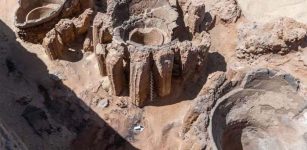 World’s Oldest Beer Factory Discovered In Abydos, Egypt
Archaeology | Feb 16, 2021
World’s Oldest Beer Factory Discovered In Abydos, Egypt
Archaeology | Feb 16, 2021 -
 European Bronze Age Treasure Of Villenna Has Artifacts Made Of Meteoric Iron
Archaeology | Feb 12, 2024
European Bronze Age Treasure Of Villenna Has Artifacts Made Of Meteoric Iron
Archaeology | Feb 12, 2024 -
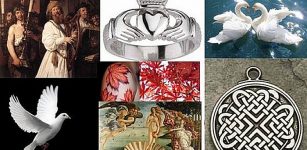 10 Ancient Love Symbols
Ancient Symbols | Jan 5, 2016
10 Ancient Love Symbols
Ancient Symbols | Jan 5, 2016 -
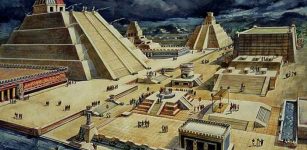 On This Day In History: Massacre In Great Temple Of The Aztec Capital Tenochtitlan – On May 20, 1520
News | May 20, 2016
On This Day In History: Massacre In Great Temple Of The Aztec Capital Tenochtitlan – On May 20, 1520
News | May 20, 2016 -
 Movie Stars’ Creepy Encounters With The Unexplained
Featured Stories | Oct 28, 2019
Movie Stars’ Creepy Encounters With The Unexplained
Featured Stories | Oct 28, 2019 -
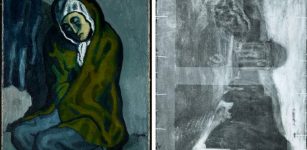 Hidden Details Discovered In Picasso’s Painting The Crouching Woman
Archaeology | Feb 28, 2018
Hidden Details Discovered In Picasso’s Painting The Crouching Woman
Archaeology | Feb 28, 2018 -
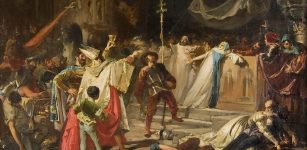 On This Day In History: Sack Of Rome Took Place on May 6, 1527
News | May 6, 2016
On This Day In History: Sack Of Rome Took Place on May 6, 1527
News | May 6, 2016 -
 The Prophecy Of The Rainbow Warriors And Future Of Planet Earth
Featured Stories | Aug 29, 2018
The Prophecy Of The Rainbow Warriors And Future Of Planet Earth
Featured Stories | Aug 29, 2018 -
 Menes – Legendary First Monarch Probably Under Different Names Who Unified Egypt
Featured Stories | Nov 7, 2016
Menes – Legendary First Monarch Probably Under Different Names Who Unified Egypt
Featured Stories | Nov 7, 2016 -
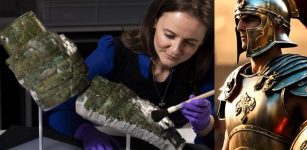 Extremely Unique Ancient Roman Arm Guard Found At Trimontium Fort – Restored And On Display For The First Time Ever
Archaeology | Jan 22, 2024
Extremely Unique Ancient Roman Arm Guard Found At Trimontium Fort – Restored And On Display For The First Time Ever
Archaeology | Jan 22, 2024 -
 On This Day In History: Battle Of Lissa Took Place In The Adriatic Sea – On July 20, 1866
News | Jul 20, 2016
On This Day In History: Battle Of Lissa Took Place In The Adriatic Sea – On July 20, 1866
News | Jul 20, 2016 -
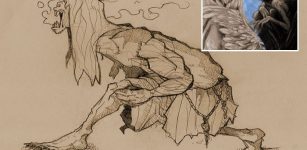 Strzyga (Strix): Slavic Malevolent Winged Female Demon With Two Souls That Usually Haunts Churches, Towers, Barns
Featured Stories | Aug 9, 2019
Strzyga (Strix): Slavic Malevolent Winged Female Demon With Two Souls That Usually Haunts Churches, Towers, Barns
Featured Stories | Aug 9, 2019 -
 Mystery Of The Roman Tile Kiln At Brandiers Farm Solved!
Archaeology | Aug 18, 2023
Mystery Of The Roman Tile Kiln At Brandiers Farm Solved!
Archaeology | Aug 18, 2023 -
 Unexplained Sightings Of An Unknown Parallel World – Did He Stumble Upon An Interdimensional Portal?
Featured Stories | Aug 3, 2021
Unexplained Sightings Of An Unknown Parallel World – Did He Stumble Upon An Interdimensional Portal?
Featured Stories | Aug 3, 2021 -
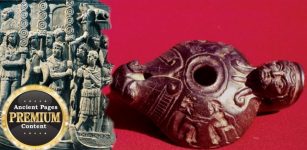 Mysterious Ancient Oil Lamps In Ohio And Wisconsin – Evidence Of Pre-Columbian Contact?
Ancient Mysteries | Dec 20, 2017
Mysterious Ancient Oil Lamps In Ohio And Wisconsin – Evidence Of Pre-Columbian Contact?
Ancient Mysteries | Dec 20, 2017 -
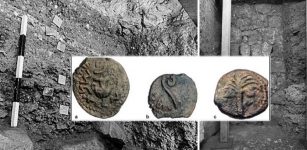 New Discovery: 2,000-Year-Old Monumental Street In Jerusalem Built By Pontius Pilate
Archaeology | Oct 21, 2019
New Discovery: 2,000-Year-Old Monumental Street In Jerusalem Built By Pontius Pilate
Archaeology | Oct 21, 2019 -
 Sailor’s Strange Discovery Of An Unknown Ancient Underground World At The North Pole
Featured Stories | Feb 10, 2024
Sailor’s Strange Discovery Of An Unknown Ancient Underground World At The North Pole
Featured Stories | Feb 10, 2024 -
 The 426-Km-Long Roman Aqueduct Provided Water For Constantinople – New Study
Archaeology | May 11, 2021
The 426-Km-Long Roman Aqueduct Provided Water For Constantinople – New Study
Archaeology | May 11, 2021 -
 New Species Of Stegosaur Is Oldest Discovered In Asia, And Possibly The World
Fossils | Mar 7, 2022
New Species Of Stegosaur Is Oldest Discovered In Asia, And Possibly The World
Fossils | Mar 7, 2022 -
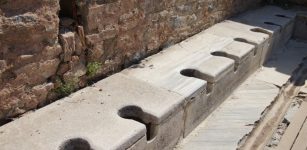 First Pay Toilets Were Invented In Ancient Rome In 74 A.D.
Ancient History Facts | Jan 29, 2017
First Pay Toilets Were Invented In Ancient Rome In 74 A.D.
Ancient History Facts | Jan 29, 2017


